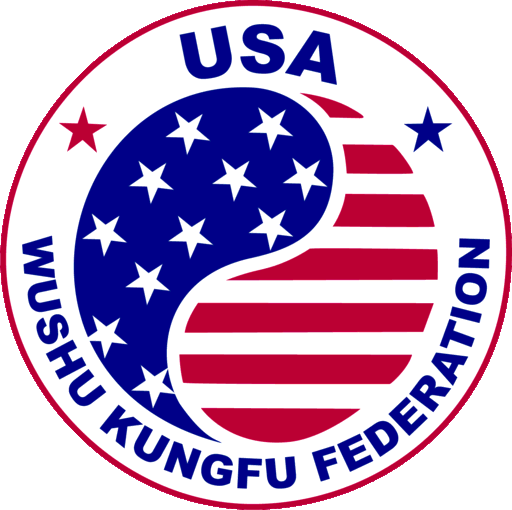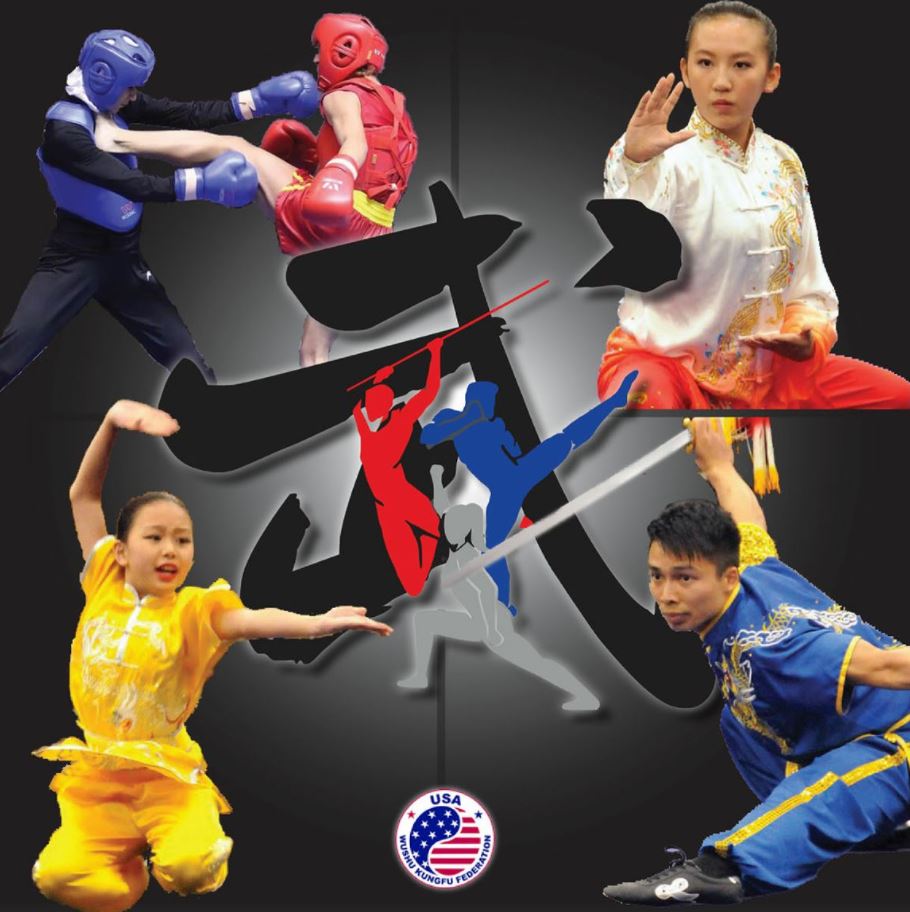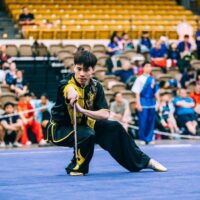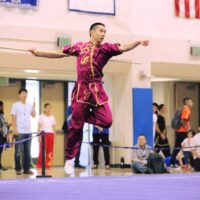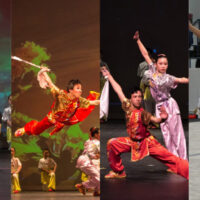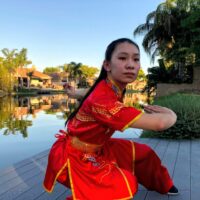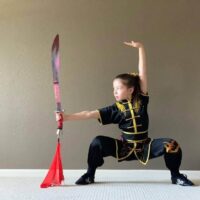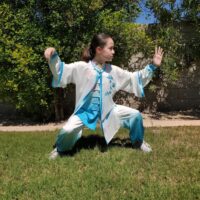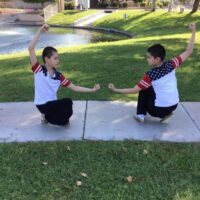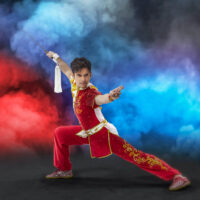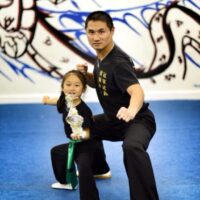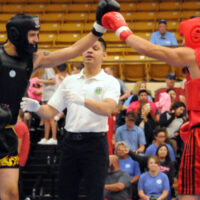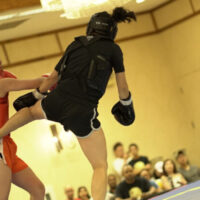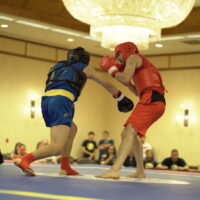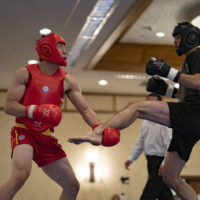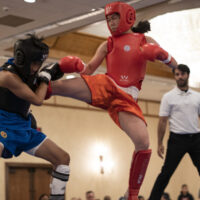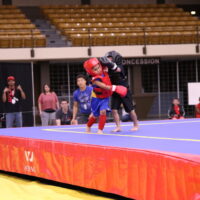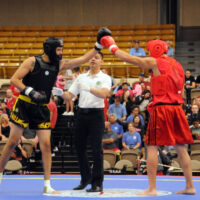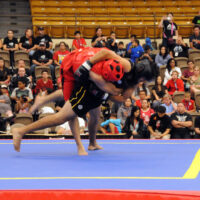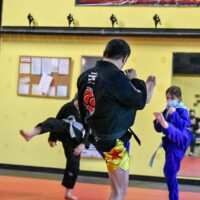What is Wushu?
Sport Wushu
Wushu, which is also referred to as kung-fu, is the collective term for the martial art practices which originated and developed in China. Today wushu has developed into various forms of practice, each with its own focus and goals. Some practices highlight health and well-being as their primary goal, while others stress maintaining the traditional culture and skills from which the arts originated. More recently, wushu has developed into a global competitive sport, which is practiced and enjoyed by thousands of people worldwide due to its unique and exciting content.
Sport wushu is categorized into two main categories, namely Taolu (Routines Competition) and Sanda (Free-Fighting Competition).
Taolu
Taolu refers to the set routine (form) practice component of wushu. A taolu routine comprises of a continuously connected set of pre-determined techniques choreographed according to certain principles and philosophies to incorporate stylistic principles of attack and defense. These include hand techniques, leg techniques, jumps, sweeps, stances and footwork, seizing, throwing and wrestling, and balances.
At official World Wushu Championships, the main taolu event categories include:
Chang Quan(Long Fist)
Nanquan(Southern Fist)
Taijiquan(Tai Chi Chuan)
Taijijian(Tai Chi Straight Sword)
Daoshu(Broadsword)
Jianshu(Straight Sword)
Gunshu(Cudgel)
Qiangshu(Spear)
Nandao(Southern Broadsword)
Nangun(Southern Staff)
Duilian(Choreographed Sparring/Duel)
Baguazhang(Eight Trigrams Palm)
Shuangjian(Double Straight Swords)
Shuangdao(Double Broadswords)
Xingyiquan(Shape & Intent Fist)
Sanda
Sanda is a modern unarmed combat sport that developed from traditional wushu techniques, and primarily makes use of punching, kicking, throwing, wrestling and defensive techniques.
Competition bouts take place on an elevated platform called a “leitai,” which is 80cm in height, 8m in width and 8m in length, and comprises of a frame covered in high density foam with a canvas cover. On the ground surrounding the platform is a protective cushion that is 30cm in height and 2 meters in width. Competing athletes wear protective gear that includes a headguard, chest protector, and gloves, as well as a mouthguard and a jockstrap.
Competition bouts comprise of 3 rounds in total, each lasting two minutes with a one-minute rest period between rounds. Apart from illegal blows and methods, sanda athletes may employ punching, kicking and throwing techniques from all styles of wushu.
An athlete will be declared the winner if he or she wins 2 out of the 3 rounds of a bout, or if his or her opponent is knocked out.
Shaolin Wushu
Shaolin Wushu is one of the most ancient and profound martial art styles and originated in the Shaolin Temple in China over 1500 years ago. Shaolin Temple is believed to have been founded by Bodhidharma, or Damo, who brought the practice of meditation and martial arts to the temple so that the monks could maintain their health and focus during long periods of meditation. Over time, the Shaolin monks developed a highly effective system of combat that was based on the movements of animals and birds, utilized many different weapons, and incorporated elements of Chinese medicine, Chan Buddhism, and philosophy.
As practitioners both came and developed from Shaolin Temple, Shaolin Wushu became a powerful symbol of Chinese martial arts, renowned for its discipline, precision, and strength. Over the next millennia, Shaolin monks became a cornerstone of Chinese culture and society, taking part in shaping Chinese history. Shaolin monks were essential in helping found the Tang dynasty, fighting off pirates in the mid-14th century, and developing the world of Chinese martial arts.
Shaolin Wushu’s roots began in the Eighteen Luohan Fists and have since spread out to include the use of staves, swords, spears, and other various weapons that become a foundation in martial arts education, with many martial arts crediting Shaolin as the birthplace of their arts. In addition to the styles of combat, traditional Shaolin martial arts includes the use of soft weapons, body conditioning, and the art of qigong, which emphasizes meditation and mindfulness while practicing martial arts and is said to confer powerful abilities if practiced properly.
Today, Shaolin Wushu continues to be practiced and celebrated around the world for its cultural significance and its role in promoting physical and mental well-being. The temple site itself is now a UNESCO world heritage site, with the temple proper, the Pagoda Forest which houses the tombs of previous monks, and Chuzu temple being the three ancient sites protected under international law. Shaolin Temple’s techniques and philosophy have inspired countless practitioners and have become an integral part of China’s rich cultural heritage, and practitioners of Shaolin come from all over the world, and many have developed true agility, strength, and skills from their practice of Shaolin Wushu.
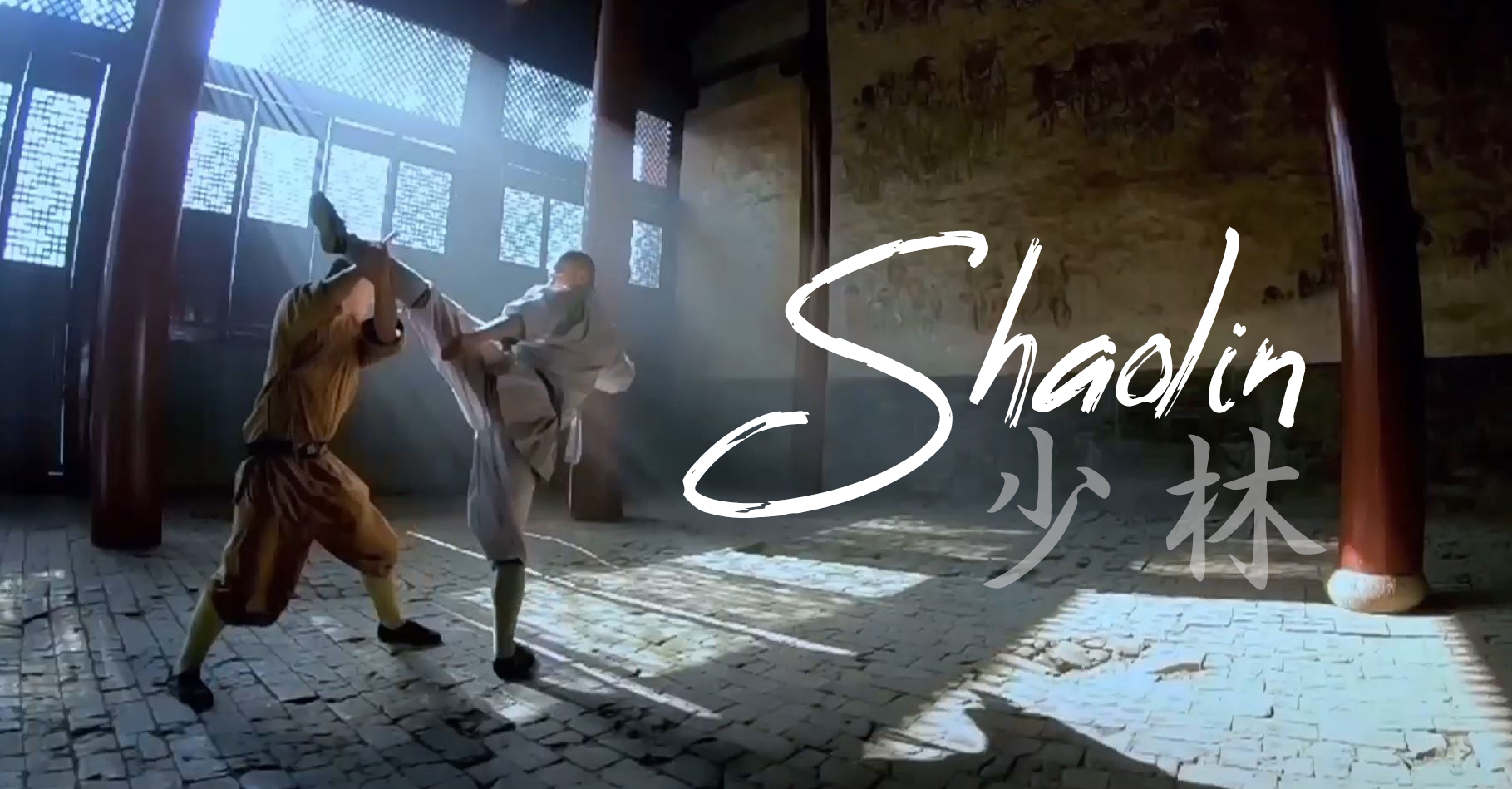
Info
Follow Us
